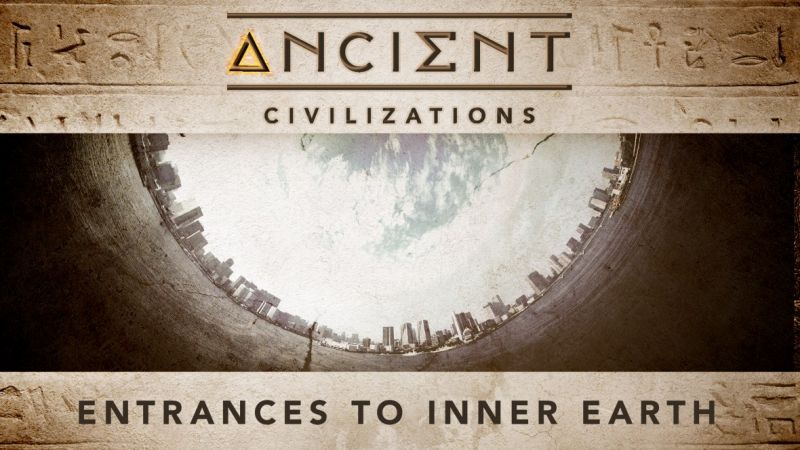Ancient Civilizations – Entrances to Inner Earth: Is there an ancient code which points the way to inner earth civilizations like Agharta and Patala? Oral traditions from indigenous cultures, throughout the world, all point to ancient advanced civilizations thriving deep under the earth. With advances in technology and spelunking, scientific communities are confirming that the Earth’s crust is filled with immense caverns which form vast subterranean networks. Our team of scholars have combed through these details to find the overlap between ancient tales and scientific discoveries. We take this one step further as we posit that these entrances to inner earth may be allegories of places where one’s physical journey becomes spiritual.
Since times immemorial, humankind has searched for the answers to who we are, where we came from and why are we here. Embedded into ancient mythology and our forgotten history, is a code which unlocks our connection with transcendence and paves the way for a new golden age.
Ancient Civilizations – Entrances to Inner Earth
Agartha
Agartha is a legendary kingdom that is said to be located in the Earth’s core. It is related to the belief in a hollow Earth and is a popular subject in esotericism. The legend remained mostly obscure in Europe until a detailed account by the nineteenth-century French occultist Alexandre Saint-Yves d’Alveydre was published posthumously, in 1910.
In his 1922 book Beasts, Men and Gods, explorer Ferdynand Ossendowski relates a story which was imparted to him concerning a subterranean kingdom which exists inside the Earth. This kingdom was known to a fictional Buddhists society as Agharti.
Agartha is frequently associated or confused with Shambhala which figures prominently in Vajrayana Buddhism and Tibetan Kalachakra teachings and revived in the West by Madame Blavatsky and the Theosophical Society. Theosophists in particular regard Agarthi as a vast complex of caves underneath Tibet inhabited by demi-gods, called asuras. Helena and Nicholas Roerich, whose teachings closely parallel theosophy, see Shambhala’s existence as both spiritual and physical.
Patala
In Indian religions, Patala, denotes the subterranean realms of the universe – which are located under the earthly dimension. Patala is often translated as underworld or netherworld. Patala is described as more beautiful than Svarga (subtle dimensions, loosely translated as heaven). Patala is described as filled with splendid jewels, beautiful groves and lakes.
In Hindu cosmology, the universe is divided into the three worlds: Svarga, Prithvi or Martya (earth/mortal plane) and Patala (gross dimensions, the underworld). Patala is composed of seven realms/dimensions or lokas, the seventh and lowest of them is also called Patala or Naga-loka, the region of the Nagas. The Danavas (demon sons of Danu), Daityas (demon sons of Diti), Yakshas and the snake-people Nagas (Serpent-human formed sons of Kadru), live in the realms of Patala.
In Vajrayana Buddhism, caves inhabited by asuras are entrances to Patala; these asuras, particularly female asuras, are often “tamed” (converted to Buddhism) as dharmapala or dakinis by famous Buddhist figures such as Padmasambhava.




